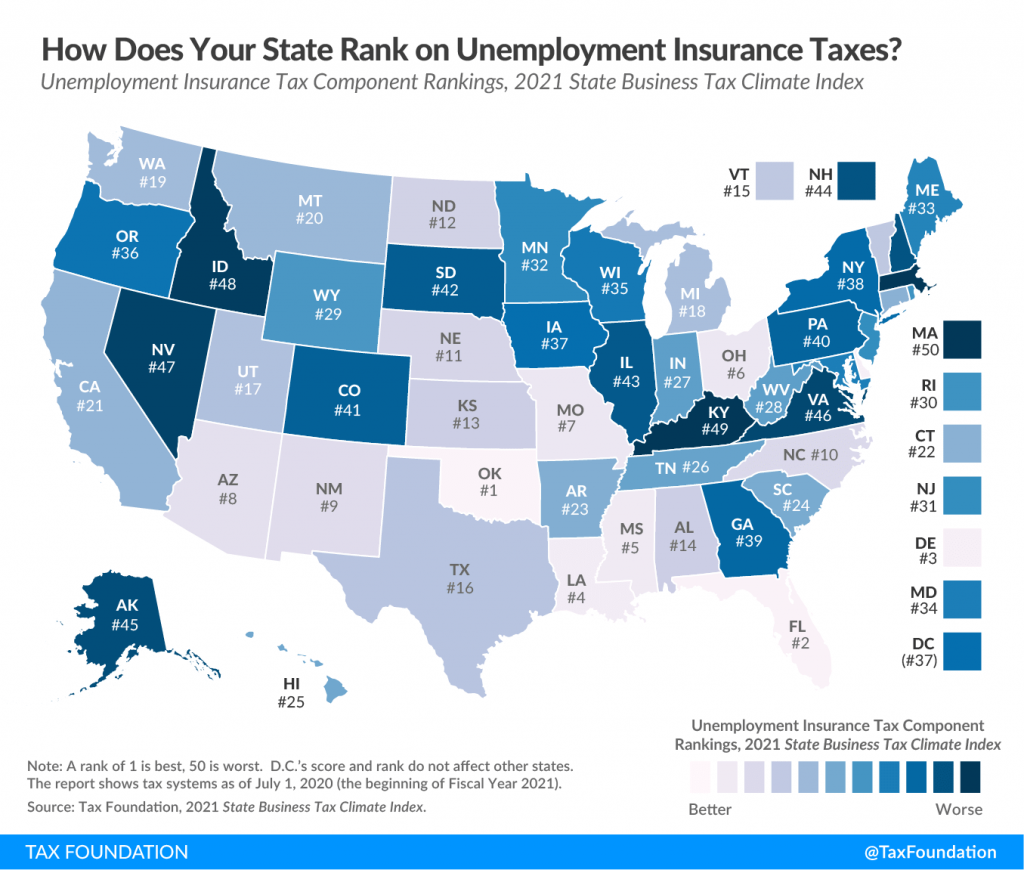One of the prime objectives of many developed countries around the globe is to control unemployment. These countries have systems in place to help unemployed employees tide over their tough times.
Quite a few state and federal-funded initiatives are taken to help workers between jobs.
As far as the U.S. is concerned, programs like SUI or SUTA, and FUTA exist to help its unemployed workforce. Apart from providing monetary benefits, these programs also help the workers in finding new jobs.
So, what is SUI, who pays for unemployment insurance, and how much taxes do you pay for unemployment? Keep reading on to understand the different facets of these programs.
What is SUI?
SUI is a tax-funded initiative that pays a specific amount of money weekly to unemployed citizens of the United States of America. It is a program in which employers provide short-term benefits to employees who have lost their jobs.
But what does SUI stand for? SUI stands for State Unemployment Insurance. It is to be noted that only the workers who have been laid off due to circumstances out of their control come under this insurance. People who are fired or left the job on of their will are not entitled to benefit from it.
Moreover, the unemployed workers will receive this benefit only if they are looking for a new job too. Any person who was initially laid off but is now planning to start their own business is not eligible for small business unemployment insurance. This benefit aims to sponsor the unemployed employee’s basic needs until they find a new job.
Do you know that SUI is ideally a part of payroll taxes? However, the SUI tax rate will vary according to each state’s requirements. At times, people get confused between SUI and UI. They frequently ask questions like “What does UI stand for?” and “Are SUI and UI the same?”
So, let us clear this up for you. Yes, SUI and UI are the same, and UI stands for Unemployment Insurance. It usually lasts for up to 26 weeks, subject to the state in which the employee worked and is currently living in.
That’s not all. The Federal government has also established an unemployment compensation plan for the people who lost their jobs during the COVID-19 pandemic. The Coronavirus Aid, Relief, and Economic Security Act (CARES) was passed in 2020. However, the Act has now been extended as American Rescue Plan Act, 2021.

Who is Eligible for State Unemployment Insurance?
People who meet the following criteria are eligible for SUI:
- An individual who has lost a job without any fault of their own
- A person who is actively seeking work, and is available to work immediately
- A worker who has earned a fixed amount of money (could be a salary or hourly wages) before becoming unemployed
Who Pays for State Unemployment Insurance?
Who pays unemployment? The employers are responsible for paying SUI tax for their employees. However, the total amount of SUI that a company is liable to pay depends upon the SUI rate they are eligible for.
Another important question that you might want to know is, do employees pay into unemployment? Ideally, SUI is an employer-only program and every company operating in the U.S. is liable to pay into SUI.
However, there is a catch.
Employees that are posted in the states of New Jersey, Pennsylvania, and Alaska are also eligible to pay for SUI. Are you working in one of these states? If yes, make sure you consult the official SUI helpdesk in your state for any queries about your contribution.
How to File a Claim for SUI?
Are you willing to apply for unemployment benefits at the SUI state? If yes, here is the process:
- You should, first of all, connect with the State Unemployment Insurance Agency immediately after becoming unemployed. You can also file a claim over the internet or even phone one in certain states.
- Make sure you give complete and correct details like the name, address, and tenure of your employment to the SUI department. It will help speed up the processing of your application.
- You are eligible to file a UI claim in the state where you were working. What if you have now shifted to another state or have worked in multiple states? In both cases, you need to consult a UI executive before filing the claim.
- If everything goes well, you can expect your first state unemployment insurance check within two to three weeks from filing the claim.
What are the Benefits of SUI?
Here is a list of benefits offered in an SUI program that every worker in the U.S. should be aware of:
- The benefits are based on a fixed percentage of an employee’s earnings. The minimum period is 52 weeks, and the maximum limit varies from state to state.
- The majority of the states allow UI benefits for a maximum period of 26 weeks. However, this duration can be increased during a recession.
- All the SUI benefits are subject to Federal income taxes. Every SUI on paycheck must be reported on the Federal income tax return. However, companies can also choose to go for tax withheld through the SUI agency.

Are Employers Eligible to Pay SUI Taxes?
Do employers pay unemployment? Almost all the companies operating in the U.S. are liable to pay SUI taxes according to their respective state laws. However, there is an exception.
Employers need not pay SUI tax for an employee who is below 21 years of age. Similarly, charitable organizations are also exempted from paying SUI taxes. But again, the law might vary from state to state.
How to Calculate SUI Tax Rate?
Although the SUI tax rates might differ from state to state, every state sets a tax rate based on:
- Base wage applicable in the state
- Total number of former workers who have filed for UI benefits
How Does State Unemployment Insurance Work?
Let us understand how does unemployment insurance work in this section:
The SUI program temporarily replaces a part of the salary of the employees who have been laid off. This process is continued as long as they are available and look for another job.
In the majority of the states, the program offers up to 26 weeks of UI benefits and replaces almost half of an employee’s salary. Before the expansion of SUI, the average weekly UI payment was $387 nationwide. However, the average UI range for Mississippi is from $215 to $550 per week.
What is SUTA?
Companies need to pay tax on SUI which is known as SUTA. The State Unemployment Tax Act is a kind of payroll tax that is to be paid by employers. Interestingly, SUTA is also referred to as:
- SUI tax
- State unemployment insurance or
- Re-employment Tax in some states
The prime motive of establishing SUTA was to provide unemployment benefits to the employees who have lost their jobs. All the states use SUTA funds to pay UI benefits to the displaced workers in the state.
Who Pays SUTA?
Just like SUI, SUTA is also an employer tax. But employees working in states like New Jersey, Pennsylvania, and Alaska are also eligible to pay SUI tax. Hence, the companies that have operations in these three states must deduct SUTA tax from their workers’ salaries and forward it to the state.
That’s not all; some businesses might also enjoy an exemption from paying SUTA tax. Largely, non-profit organizations and companies with a few on-roll employees are exempted from paying this tax.
What is SUTA Wage Base?
Do you know that every state sets its SUTA wage base? So what is this SUTA wage base? It is the maximum limit up to which a worker’s income can be taxed. This base will remain the same for all the employers in a state.
Now the question is, who pays unemployment? Let us understand this with an example, the SUTA wage base for the state of Washington for 2020 was $52,700. It means that all the companies are liable to pay the tax on every employee’s income until the amount reaches $52,700.
The SUTA wage base is subject to revision every year. Therefore, employers must ensure that they stay up to date with their SUTA wage base and withhold the accurate tax for each worker.
What is the SUTA Tax Rate?
Just like the SUTA wage base, SUTA tax rates also differ from state to state. Moreover, each state has a range for its SUTA rates. However, many states give a specific rate to new employers.
The state might assign a new rate once the employer starts gaining more experience. At times, states also allocate SUTA rates to employers based on their industry. For instance, the SUTA rate for construction companies is ideally higher than the non-construction ones.
Let us understand this with an example. The SUTA rate for a new employer in Ohio is around 2.7%. But this rate shoots up to around 5.9% for a new construction company. So how much is unemployment tax? All we can say is, new employers should wait to hear their final SUTA rate from the state itself.
In the meanwhile, we have curated a state-wise list of the SUTA tax rates 2021 for you:
- Alabama Unemployment Tax Rate – 0.65% to 6.80 %
- Alaska Unemployment Tax Rate – 1.5% to 5.9%
- California Unemployment Tax Rate – 1.5% to 6.2%
- Delaware Unemployment Tax Rate – 0.3% to 8.2%
- Florida Unemployment Tax Rate – 0.29% to 5.4%
- Georgia Unemployment Tax Rate – 0.04% to 7.56%
- Illinois Unemployment Tax Rate – 0.2% to 6.40%
- Kansas Unemployment Tax Rate – 0.20% to 7.60%
- Tennessee Unemployment Tax Rate – 0.01% to 10%
- New Jersey Unemployment Tax Rate – 0.4% to 5.40%
- New York Unemployment Tax Rate – 0.6% to 7.90%
- Texas Unemployment Tax Rate – 0.46% to 6.46%
- Washington Unemployment Tax Rate – 0 to 6.86%

Is State Unemployment Insurance State or Federal?
Is unemployment state or federal? SUI is funded at both State and Federal levels. Here’s another thing, all the Federal contributions to SUI are paid under FUTA. So what’s a FUTA?
At the national level, employers also need to pay an unemployment tax, called the Federal Unemployment Tax Act (FUTA). Companies report their FUTA tax by submitting an annual Form 940 with the Internal Revenue Service.
What does futa mean for the employers? Under FUTA, an employer has to pay unemployment tax on every $7,000 earned by an employee while working in the organization. Once the employee crosses the $7,000 limit, the company is no longer liable to pay FUTA tax.
Please note that, unlike SUTA rates, FUTA rates are not subject to frequent revisions. The last revision was done in 1983. The tax rate has been 6% to date. However, this rate has been dropped down to 0.6% for the companies that have earned credits for paying SUI. As far as SUI tax rates are concerned, they can vary from 0 to 11%.
Who Should Pay FUTA Tax?
Employers should file a FUTA payroll tax every year. Apart from this, they should also pay tax quarterly. Which is the last day of filing these taxes? According to FUTA regulations, the tax is due on every last day of the quarter.
Any employer who has paid a salary of $1500 or more to an employee during a calendar quarter is eligible to pay FUTA. He is also eligible to pay FUTA if he has just one on-roll employee. This employee should have worked for at least 20 weeks in a calendar year.
This was all about the state unemployment tax. The need for measures like SUI, SUTA, and FUTA increases more during economic slowdowns or recessions. All the employers should come together and make efforts to help displaced workers. Last but not least, both the workers and employers should be aware of the latest unemployment tax rates applicable in their state.
Insurances like these help workers from not falling through the cracks of unemployment. These initiatives can help save a country’s skilled workforce even in times of great hardship.
Let us know if we’ve missed out on anything about State and Federal Unemployment Insurance. We’d love to get a heads-up and update our guide, contact us at @HarmonizHQ.



